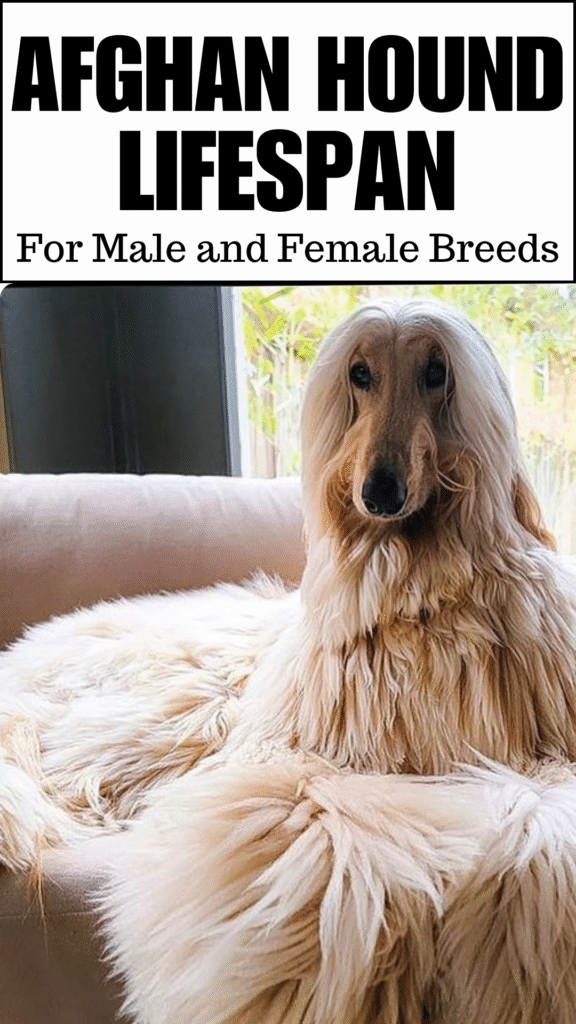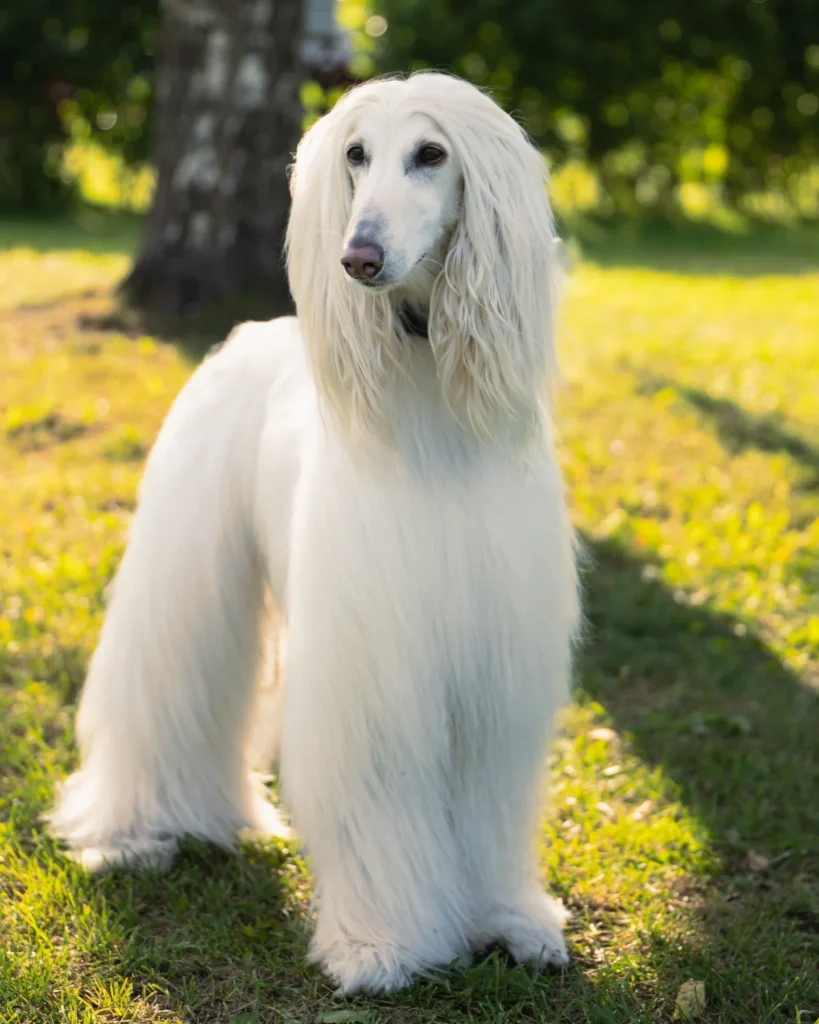I’ve had the pleasure of knowing these dogs for years, and there’s truly nothing quite like an Afghan Hound.
Imagine a canine that carries itself like royalty, that’s them.

They are more than just dogs with beautiful hair; they are an ancient sighthound breed.
This means their history is long, tracing back to the mountainous regions of Afghanistan, where they hunted using their sight and incredible speed.
If you bring one of these magnificent creatures into your life, you need to think long-term.
Knowing their expected time with you is vital for a responsible owner.
Since they are such a unique breed, understanding their specific health needs is the only way to give them the best possible life.
It’s about planning for a decade or more of dedicated care.
Here’s what you should know about how long Afghan Hounds live and how to help them thrive.
Average Lifespan

From my own experience, when someone asks how long an Afghan Hound lives, I tell them to plan for a long relationship.
The typical range you should expect for this breed is 12 to 14 years.
Honestly, that is a great run for a large, deep-chested dog.
If you compare them to other breeds, this puts them firmly in the better half of the large dog life expectancy chart.
For instance, some giant breeds barely reach 8 or 10 years, while our elegant sighthounds consistently make it well into their second decade.
You can’t change your dog’s genetics, so always choose a puppy from a reputable breeder who screens for inherited issues like hip dysplasia or eye problems.
Everything else is on you!
Their lifestyle is critical, plenty of running room is necessary, but the right kind of exercise prevents injury.
Common Health Issues in Afghan Hounds
Like all purebred dogs, the Afghan Hound has specific genetic predispositions that owners should be aware of.
By knowing what to look for, you can work proactively with your veterinarian to manage or mitigate these conditions
1. Hip Dysplasia
What it is:
A malformation of the hip joint (a ball-and-socket joint) where the ball and socket don’t fit together properly.
This leads to instability, grinding, and, over time, painful secondary osteoarthritis.
Impact:
While Afghan Hounds are not as commonly affected as some other large breeds, it is still a risk.
Symptoms can range from a subtle difficulty in getting up or a reluctance to run and jump to noticeable limping.
Owner Action:
Maintaining a lean body weight throughout your dog’s life is the single most important preventative measure.
Reputable breeders screen their dogs using Hip Evaluation (OFA or PennHIP).
2. Eye Conditions: Cataracts
What it is:
An opacity or clouding of the lens of the eye that prevents light from reaching the retina, leading to impaired vision or blindness.
Impact:
Afghan Hounds are predisposed to several eye issues, including various forms of cataracts and Progressive Retinal Atrophy (PRA).
Hereditary cataracts can sometimes develop quite rapidly, resulting in blindness within months of initial appearance.
Owner Action:
Annual eye examinations by a veterinary ophthalmologist are highly recommended, especially if you plan to breed your dog or have concerns about their vision.
3. Endocrine Disorders: Hypothyroidism
What it is:
A condition where the thyroid gland does not produce enough thyroid hormone, leading to a slowed metabolism.
Impact:
While generally treatable, symptoms are often subtle and can include unexplained weight gain, lethargy, a dull and dry coat, and symmetrical hair loss.
Left untreated, it can affect the heart and nervous system.
Owner Action:
This condition is diagnosed via a blood test and is managed with lifelong, inexpensive daily oral medication.
Early diagnosis means effective management and a normal life expectancy.
Tips for Extending Your Afghan Hound’s Lifespan
Afghan Hounds typically have a lifespan of 12 to 14 years.
Their well-being and longevity are greatly influenced by consistent care that caters to their unique physical and psychological needs.
Here are essential tips for extending your Afghan Hound’s lifespan:
1. Balanced Lifestyle: Diet, Exercise, and Rest
The Afghan Hound is an athletic sighthound that is also prone to being a dignified couch potato indoors.
Balancing these extremes is key to their health.
- Vigorous Exercise: This breed requires a substantial amount of daily exercise—ideally 1.5 to 2 hours per day for an adult.
This must include:- Secure Running:
They have a high prey drive and incredible speed.
To satisfy their coursing instincts safely, they must have the opportunity to run at full gallop in a high-fenced, secure area.
Off-leash walking in open, unfenced areas is generally not recommended due to their strong chase instinct. - Mental Stimulation:
Incorporate activities like lure coursing, scent work, or puzzle toys to challenge their intelligence and prevent boredom, which can lead to destructive behavior.
- Secure Running:
- Quality Rest:
After their exercise is satisfied, Afghan Hounds thrive on rest and comfort.
Ensure they have comfortable, soft bedding (like an orthopedic bed) where they can stretch out and relax.
Adequate rest helps their muscles and joints recover. - Dietary Consistency:
As discussed, maintain a high-quality, measured diet to prevent obesity, which is a major factor in joint issues and reduced lifespan.
2. Early Detection of Health Problems
Proactive veterinary care is vital for catching the most common breed-specific health issues while they are still manageable.
- Annual (or Bi-Annual) Wellness Exams:
As your Afghan Hound enters middle age (around 7 years), consider bi-annual (twice-yearly) vet check-ups.
For larger breeds, a six-month interval can make a significant difference in catching developing conditions. - Bloodwork & Health Screening:
Ask your vet about running routine blood tests, including a thyroid panel, as Afghan Hounds can be prone to hypothyroidism.
Early detection allows for immediate medical management. - Bloat (GDV) Awareness:
As a deep-chested breed, they are at a higher risk for Gastric Dilatation and Volvulus (Bloat), a life-threatening emergency.- Prevention: Avoid vigorous exercise an hour before and after meals.
- Symptoms: Know the signs: pacing, restlessness, failed attempts to vomit, and a distended abdomen.
- Sighthound Anesthesia Sensitivity:
Due to their low body fat composition, Afghan Hounds are uniquely sensitive to certain types of anesthesia.
Always inform your veterinarian that your dog is a sighthound and ask for a vet with sighthound experience if a procedure is needed.
3. Providing Love, Comfort, and a Low-Stress Environment
The Afghan Hound has an independent but sensitive and reserved temperament.
A calm and secure home environment is critical to their emotional health.
- Consistent Routine:
Provide a predictable daily routine for meals, exercise, and rest.
This consistency helps reduce anxiety in a dog that can be somewhat sensitive to changes. - Gentle Socialization:
While aloof with strangers, they are deeply loyal and affectionate with their family.
Early, positive socialization helps them become confident and well-adjusted, reducing stress when encountering new people or situations. - Grooming as Bonding:
The extensive grooming required (daily brushing) should be turned into a positive bonding experience.
Consistent, gentle handling from a young age prevents the routine from becoming a source of stress and ensures their long coat doesn’t matt, which can cause skin pain and infection. - Respect Their Aloofness:
Do not force interactions with strangers.
Respect their dignified and reserved nature, allowing them to approach new people on their own terms.
Creating a space where they feel safe and comfortable to retreat is essential for their mental well-being.
Conclusion
The majestic Afghan Hound, known for its aristocratic bearing and flowing coat, has an average life expectancy of 12 to 14 years.
Achieving this longevity, and often surpassing it, is a testament to the owner’s commitment to proactive care and attention.
The journey to a long, healthy life for this noble sighthound is built upon several critical pillars:
- Optimal Nutrition:
Providing high-quality, protein-rich food and diligently managing portion sizes to prevent obesity and protect their sensitive joints. - Tailored Exercise:
Ensuring a balanced routine that satisfies their high energy and coursing instincts in a safe, secure environment. - Vigilant Veterinary Care:
Committing to regular health screenings and being aware of breed-specific risks like Bloat and anesthesia sensitivity. - Emotional Well-being:
Creating a low-stress, consistent home environment that respects their independent yet sensitive nature.
Cherish every moment with your Afghan Hound; their health, happiness, and long life are the finest rewards for your devotion.